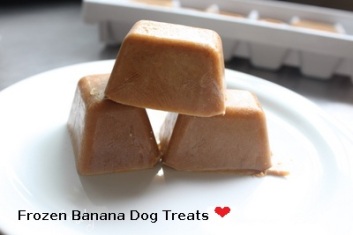The other day in the store, a couple came in with their new puppy. They had several valid questions about the different kinds of dog food, feeding science based formulas or the holistic approach. They were quite mixed up on canned food only being a treat instead a main food staple. I gather that their trainer had influenced their opinions in saying that it does not contain the nutrients like kibble does and people only use it to entice picky eaters – which is not true at all. Canned food in combination feeding with dry food has sooo many added benefits, however feeding canned food alone for long periods of time can lead to major plaque build up. The reason for this is the crunch of kibble actually helps scrap off the plaque as it accumulates, where as the soft texture of canned food leaves the build up around the gums.
Anyways, there a three added benefits I can think of right away,
- Moisture content – canned food on average has a moisture content greater than 70%. What does this really mean? It means your pet is ingesting more water!!This is a HUGE added bonus with older male cats, they need the added moisture to stave off kidney failure or disease. I lost one of my childhood cats due to this, looking back, I know why he developed kidney failure. He never once had canned food and hardly ever drank water… Introducing canned food into your cats diet at any time can help prevent this. However it isn’t just cats that benefit from the added water. All pets, dog, hamsters, rabbits, ferrets, everyone benefits from the added water, after all water is essential to all life and maintaining hydration.
- Calorie dilution – the higher moisture content means lower calories compared to the dry kibble equivalent.When would this benefit a cat or dog? During weight loss. You can feed a larger volume of canned compared to dry while actually reducing the calories consumed. However just because you can, does not mean you should. Always check the proper feeding guide and follow it with slight modification depending on the activity of your dog. The increased water content will help increase the feeling of fullness during a meal and aid digestion too.
- Soft Texture – the soft texture of canned food helps during times of oral sensitivity.Oral sensitivity can occur during teething as a puppy, or in aging pets when teeth, gums, and jaws become more sensitive, or during recovery from facial trauma. Many smaller dogs are subject to dental issues, and tend to need some of their teeth removed. During the recovery time after oral surgery, canned food can be a great alternative to wetting down your dogs regular kibble.
These three are just some of the added benefits I can think off the top of my head. Like I said, the benefits of canned food do not just affect dogs. It affects all pets, and it really should be incorporated into your pets diet. The next question the couple had was, once we start adding canned food to their diet, does it have to be all dry or all canned?
Definitely no!

Feeding a combination of dry and canned food can provide the benefits of both. The best way to achieve an appropriate balance of wet to dry is to start by determining the dry food equivalents of the canned food. For example, let’s say the calories in one can of wet food is equal to the calories in one cup of dry food. If you wanted to feed a diet of 1:1 and have been feeding a cup of dry food per day the equivalent including canned would be ½ a can and ½ a cup of dry.
Make sure you choose a canned food that compliments the dry food you are feeding. I try to keep the same protein in the canned as in the kibble. For example, if the main protein in the kibble is turkey, I try to keep the canned protein a fowl too. Or if kibble is salmon, try to stick with a fish in the canned. A lot of dry food brands manufacture a wet version of the foods, I know Natural Balance carries a canned version of each recipe.
On a side note, never purchase canned food that has been dented or damaged. Even though they may be on clearance or tempting. The damage could have a caused a break in the can, or its seal which has let air get in and the contents have started to rot or mold. Unfortunately working in pet retail I have seen this all too often, one of the worse offenders was the pedigree canned food.


